The Young Lenin in St. Petersburg
Editor’s note: This article reviews the life and work of V.I. Lenin as a young revolutionary in St. Petersburg in the 1893-95 period. It serves as Part 2 of a series on the life and work of the great communist thinker, the veritable founder of the Russian Communist Party (Bolshevik) and the Soviet state. It draws heavily from Vladimir Ilyich Lenin: A Biography, a voluminous work by several Soviet authors with P.N. Pospelov as editor. It also draws from other biographical sources as well, including Mary Hamilton-Dann’s Vladimir and Nadya: The Lenin Story and the History of the Communist Party of the Soviet Union (Bolsheviks): Short Course. Part 1, “The Young Lenin”, is also available on this site. We are preparing more articles on the subsequent historic phases of Lenin’s life and work, in continuing commemoration of his 150th birth anniversary this year.
The Young Lenin in St. Petersburg
Building the workers’ mass movement under the Marxist banner
In 1893, and turning 23, Lenin moved to St. Petersburg. In 1894, Nicholas II succeeded Alexander III—the autocrat who sent Lenin’s brother to the gallows—to the Tsarist throne. At the time, the socialist movement was still an embryo growing underground. Lenin was among the earliest leaders of this incipient movement, eventually forming and leading the League of Struggle for the Emancipation of the Working Class. He had to pursue his revolutionary work under the watchful eyes of the Tsarist police, having had a police record since his university days.
While working aboveground as a lawyer, Lenin expanded his underground Marxist activities and propaganda-organizing work among the working class of St. Petersburg. Joining the Social Democrats (SD’s), he soon became one of the most consistent advocates of Marxist theory and tactics in the workers’ movement. He also waged ideological struggles against feudal, liberal-bourgeois and petty-bourgeois ideologies—some of which were expressed among the ranks of SD’s themselves. It was here where he met lifelong comrades and formed deep friendships, including his future wife and closest comrade-in-arms Nadezhda Krupskaya.
Among the St. Petersburg proletariat
On his journey from Samara towards his final destination St. Petersburg in late summer 1893, Lenin stopped over at Nizhny Novgorod and at Moscow to get in touch with like-minded Marxists. In a long talk with comrades in Nizhny Novgorod, he was already focused on the need to set up a Social-Democratic (SD) organization and establish contacts between the Marxists of different cities. From Nizhny Novgorod he went next to Moscow, where the Ulyanov family was then living. There he also met with local Marxists and worked in the reading-room of the Rumyantsev Museum.
Lenin arrived in St. Petersburg on 31 August, still under the watchful eyes of the Tsarist police. A lawyer immediately took him in as assistant barrister. For Lenin, however, this was merely a front. He spent little time for legal practice and devoted most of his hours to revolutionary work. Making use of secret addresses and contacts in the city given by Nizhny Novgorod comrades, he joined a small Marxist study-circle, which consisted mainly of students of the Technological Institute and which conducted revolutionary propaganda among advanced workers.
Before Lenin’s arrival, this study-circle was at a loss on how to apply Marxism to Russia’s backward economic conditions. He had seen first-hand the fragmented and amateurish nature of the SD circles, and that his own circle “suffered painfully and acutely” from that realization. Lenin infused new life into the circle, and became its recognized leader before long. Already he was deadset on founding a revolutionary proletarian party.
Lenin’s first efforts coincided with the start of an upswing in the workers’ mass movement, which gained momentum in the 1890s. Nearly 3 million workers were employed in big factories, on the railways, and in mining. Exploited to the full by the capitalist employers, they suffered from long work hours, low wages (especially for women and children), brutal treatment and wretched conditions inside the factories and in their residential quarters. The proletarian masses were driven to fight back, even if their sporadic and spontaneous protests often ended in defeat and reprisals, including jail terms and penal servitude for strike leaders.
The workers’ struggle had to be more organized and infused with revolutionary-socialist consciousness. Thus, Lenin set before the St. Petersburg Marxist circles the tasks of politically educating and organizing the workers, explaining to them the common aims and paths of the proletarian class struggle, and developing their socialist consciousness. Together with the circle, he established contacts with many advanced workers from the Putilov Works, the Semyannikov Works, the Obukhov Works, the Thornton Mill, the Laferme Mill, and other factories.
Lenin began to attend workers’ political circles already functioning, and meet with their organizers. He attended meetings held in workers’ homes, became active in conferences of activist workers, and initiated new workers’ study circles in the various districts of St. Petersburg. He made a thorough study of the working and living conditions and the political temper of the masses, not just through desk research but by listening closely to their stories of factory life and of rural oppression in the villages where they came from.
Lenin was a skillful political educator, expounding Marxist principles with real-life examples drawn from the workers’ direct experiences, and explaining complicated questions of theory in simple, comprehensible terms. Krupskaya recalled in her Memoirs: “The combination of theory with practice was the particular feature of Vladimir Ilyich’s work in the circles. Gradually other members of the circle began to use this approach.”
Ivan Babushkin recalled how Lenin conducted studies on political economy: “The lecturer explained the subject to us in his own words, without reading from notes; he would try to get us to disagree with him or start a dispute, and then he would egg us on, making one of us argue his point of view with another. Our lectures, therefore, were very lively and interesting, and tended to develop a habit for public speaking; this method of study was the best way of mastering the subject.”
Lenin’s lectures on Marxism broadened the workers’ horizons and molded their class consciousness. He constantly reminded the circle members to always keep in mind the revolutionary aims of their struggle and not be bogged down in pure trade unionism. Overworked though they were, they would often forego sleep and rest in order to read up for circle studies. Babushkin recalled that period as “one of intense activity in the sense of mental development; every minute was precious, every hour we were not at work was scheduled and allocated beforehand; our whole week was strictly mapped out.”
Lenin urged the workers’ circles to set up libraries and reading programs to promote political education. He taught the circle members how to collect data and on that basis produce leaflets on the burning issues and with calls to action. He often gave the circle members written questions, to answer which they had to investigate factory conditions. He himself was able to enter the Putilov Works’ vast interior to better familiarize himself with workers’ conditions.
Krupskaya recalled how Lenin’s method of data collection required the members of the Marxist circle to directly visit the workers where they worked and lived: “Then I and Apollinarya [a close friend and also a Marxist] put kerchiefs over our heads and made ourselves look like women factory workers, and went personally to the Thornton factory barracks, visiting both the single and married quarters. Conditions were most appalling. It was on the basis of material gathered in this manner that V. wrote his leaflets.”
In the conduct of the circles, Lenin went into details of teaching the worker activists about clandestine methods; how to behave in the event of arrest, interrogation and trial; how to help arrested and exiled comrades; and how to raise funds for such purpose. Krupskaya described the devices of secrecy they had to adopt: how a serious meeting would present itself as a harmless “pancake tea” gathering; how circuitous routes had to be taken coming in and out of meetings to evade police spies; how they used invisible ink and ciphers.
Lenin gave special attention to the training of organizers and instructors for the workers’ circles. He trained worker activists to be mass organizers, and also relied on them to lay the groundwork for a Marxist working-class party. Several of the worker activists he trained, such as Ivan Babushkin and Basily Shelgunov, performed outstandingly in this regard.
Lenin’s practical revolutionary work among the St. Petersburg workers in 1894-95 made him profoundly familiar with working-class life. It cemented his belief in Marx’s theory of the proletariat as the leader of all toiling classes. At the same time, he earned the deep affection and respect of the city’s workers. His own circle increased from its original membership of four workers to 19, including some women workers.
Lenin first met Nadezhda Konstantinovna Krupskaya in February 1894, where she was a volunteer teacher at a workers’ evening Sunday school in the Smolensky district. Many of her pupils were also members of the circles conducted by Lenin. Krupskaya’s father, Konstantin Krupsky, was a revolutionary intellectual of the 1860s. From her early youth in St. Petersburg, she herself became a dedicated revolutionary. Later joining a Marxist circle in the 1890s, she devoted herself to the cause of the working class.
Lenin and Krupskaya were drawn together by the common cause, which formed the basis of their future intimate and lifelong partnership. On his way home from lectures, Lenin would drop in on Krupskaya, who lived with her mother. She was in love with her voluntary school work, was well-acquainted with local working-class life, and could talk about it for hours. Lenin listened to her, picking up “every little detail that could help him piece together a picture of the life and conditions of the workers, to find some sort of avenue of approach to them in the matter of revolutionary propaganda.”
Krupskaya explained how her classes became a recruiting ground for the illegal workers’ circles: “In those days the Sunday Evening Adult School was an excellent means for getting a thorough knowledge of the everyday life, the labor conditions and the mood of the working masses … Workers belonging to our organization went to the School in order to observe the people and note who could be brought into the circles or drawn into the movement … It was a kind of silent conspiracy. We were actually able to talk about anything in the School, although there was rarely a class without a spy …”
By end-1894, the St. Petersburg Marxist circles led by Lenin and his closest comrades were ready to shift their emphasis: from the propaganda (systematic and thorough dissemination) of Marxism in small circles of advanced workers, they launched political agitation (sharp focus on burning issues of the day) among the broad masses of workers. Responding to the labor unrest at the Semyannikov Works, Lenin and his group drew up their first agitation leaflet and distributed it among the workers. They did likewise when the dock workers went on strike: they issued and distributed a leaflet en masse, which solidified the workers’ ranks, rallied other proletarians of St. Petersburg to their cause, and helped them win the strike.
The ideological defeat of Narodism
In the 1890s the Narodniks, former revolutionaries against Tsarism, became moderate or even pro-Tsarist liberals although they still had some influence among the youth and were trying to reach out to the working class. In late 1893, they launched a campaign against Marxism and Russian Marxists in the legal magazine Russkoye Bogatstvo (“Russian Wealth”) that gathered Narodnik contributors led by the “socialist” N. Mikhailovsky.
Lenin thus took on the historic but unfinished task, began by Plekhanov’s group, of thoroughly exposing and defeating Narodism as a bankrupt ideological trend. In the last months of 1893, through a lecture and in a paper he subsequenly wrote (“On the So-Called Market Question”), he criticized the liberal-Narodnik views and gave a thorough analysis of Russian conditions. The Narodniks were asserting that capitalism could not develop in Russia because the widespread poverty blocked the growth of a home market. Lenin disproved this with statistical data showing the rise of large capitalist farms and increased class differentiation within the peasantry. Lenin’s paper was circulated in St. Petersburg and other cities, strengthening the SD positions in the struggle against Narodism.
In early January 1894, Lenin visited Moscow and attended some illegal meetings, in one of which he in supported another Marxist in arguing against Narodnik book author V. Vorontsov. His speech opened the eyes of many young Moscow Marxists. He quickly followed up with a critique of Vorontsov’s book in a lecture to the Marxists of Nizhny Novgorod. Later that spring and summer he wrote What the ‘Friends of the People’ Are and How They Fight the Social-Democrats to thoroughly demolish the Narodnik views peddled by Russkoye Bogatstvo.
In exposing Narodism’s bankruptcy, Lenin’s What the ‘Friends of the People’ Are thereby also concretized why and how Marxism must take root among the Russian working class to guide its struggles and organizations. Study, propaganda, organization—this was how Lenin pithily defined the task of Russian Marxists. Theoretical and practical activities must be tightly linked and put in the service of the working class in leading all exploited people to overthrow bourgeois rule and achieve socialism. In the book, Lenin also for the first time advanced the idea of a revolutionary alliance of the workers and peasants as the decisive force for overthrowing Tsarism, on the way towards abolishing the capitalist system.
The three parts of the book ‘Friends of the People’ were published separately, in St. Petersburg, in Gorki and in Moscow; local organizations made further handwritten, typewritten, and hectographed copies. The book was was circulated widely among illegal circles in many cities of Russia and was very popular among SD’s and student-youth. All in all, the book energized the Russian Marxists, provided them an effective propaganda weapon, and turned Lenin into a recognized theoretical and political Marxist leader.
In Krupskaya’s Memories: “In the autumn of 1894 Vladimir Ilyich read his work The Friends of the People to our circle. I remember how everybody scrambled for this book. It set out the aims of our struggle with remarkable clarity. The Friends of the People in duplicated form afterwards passed from hand to hand under the alias of the Little Yellow Books. These were unsigned. They had a fairly wide circulation, and there can be no doubt but that they had a strong influence on the Marxist youth of those days.”
Exposing the bourgeois nature of ‘legal Marxism’
Alongside his struggle against the Narodniks, Lenin also waged a similar ideological struggle against the “legal Marxists”—bourgeois intellectuals who claimed to be Marxists and critical of Narodniks, and who expounded their views in the legal press. They recognized the progressive aspect of capitalism and extolled its growth in Russia. At the same time, they rejected the core of Marxism: class struggle, socialist revolution, and the dictatorship of the proletariat. They picked some Marxist quotes and misinterpreted these in ways acceptable to the bourgeoisie. Many of them later joined the party of the liberal-monarchist bourgeoisie (the Constitutional Democrats, or Cadets) and fought bitterly against Soviet power.
Lenin clearly saw that the liberal-bourgeois spokesmen of “legal Marxism” were actually disguised enemies of Marxism who served capitalism. In the autumn of 1894, at a meeting of a local Marxist circle, he read a paper that criticized the “legal Marxist” views of Struve in his book Critical Remarks on the Subject of Russia’s Economic Development.
At the same time, Lenin exercised tactical flexibility in entering into joint projects with “legal Marxists” that criticized the Narodniks, while ensuring that he and other Marxists also remained free to criticize “legal Marxist” views. In a miscellany published in 1895, for example, Lenin and two other SDs joined the editorial board together with the “legal Marxists” Struve and Klasson. (The book was banned by the censors, and only 100 of the 2,000 copies were saved and circulated among the SD’s of Russia.)
Writing an article in that miscellany under the name “K. Tulin,” Lenin roundly criticized both Narodism and “legal Marxism.” He later explained the need for such tactical alliances, saying that “only those who are not sure of themselves can fear to enter into temporary alliances with unreliable people; not a single political party could exist without such alliances.” As a result, Lenin said, “an astonishingly rapid victory was obtained over Narodism, and Marxist ideas … became very widespread.”
Lenin’s trip abroad, meetings with Plekhanov
In mid-February 1895, Lenin attended a conference of SD groups based in four cities. The meeting discussed two key points: (1) the question of changing over from the propaganda of Marxism in narrow circles to mass political agitation, and (2) publishing popular readings for the workers and establishing close contact with Plekhanov’s Geneva-based Emancipation of Labor group.
The first question was also discussed at a joint SD-workers circles conference in St. Petersburg, in which the pamphlet On Agitation was read and discussed, with Lenin pushing for the transition to mass agitation. The workers supported him, and his motion was passed by majority vote. Thenceforth, SD agitation in St. Petersburg spurred the growth of the workers’ mass movement.
On the second question, it was decided that two men would be sent abroad to represent the Russian SD’s—Lenin for St. Petersburg and Y. Sponti for Moscow. Lenin fell ill with pneumonia, however. Resetting his trip to end-April, he seized on the need for a convalescent vacation as his official reason for travel. The Tsarist police promptly notified all frontier points and agents abroad to surveil his movements.
Lenin had his first meeting with Plekhanov in Geneva. The older Marxist was much impressed with the youthful revolutionary, while Lenin regarded all three (Plekhanov, Axelrod, and Zasulich) with utmost respect and liking. The meeting cemented the ties between the exiled group and the Russia-based SD groups that Lenin represented. His proposal to publish collections of popular articles for workers was adopted, and it was decided to publish abroad a miscellany entitled Rabotnik.
That early, however, Plekhanov and Lenin already differed in some fundamental questions. Lenin upheld the idea of the hegemony of the proletariat in the bourgeois-democratic revolution and the strategic importance of the worker-peasant alliance. On the other hand, Plekhanov considered the Russian liberal-bourgeoisie as the logical leader of that revolution (while the proletariat was still weak) and saw the peasantry as non-revolutionary.
After some three weeks in Switzerland, Lenin stayed for six weeks in Paris, where he met Paul Lafargue, son-in-law of Marx and one of the founders of the French Workers Party. A digestive ailment brought him back to Switzerland for a few days. Then he left again for Germany where he spent many hours studying Marxist literature and taking notes in the Berlin Imperial Library. As in Paris, he spent time studying local factory conditions and attending workers’ meetings. He met prominent German SD leader Wilhelm Liebknecht, but failed to work out a much-sought meeting with Engels, who was living in London and already seriously ill.
Lenin returned to Russia in September 1895, bringing with him illegal Marxist literature, ingeniously concealed in his luggage and thus left undetected by the police despite a thorough search. The materials were quickly distributed to the SDs of different cities. He also immediately met with local SD groups to arrange for contributions for the planned Rabotnik miscellany. Already marked as a dangerous revolutionary upon his return from abroad, Lenin faced more intense surveillance. While he took all possible precautions, he stepped up his clandestine work.
In moving around within St. Petersburg and from city to city, Lenin made serious use of clandestine techniques to elude relentless police surveillance. He used his familiarity with the city’s alleys and shortcuts to evade the police. He assumed various names in different workers’ circles and different districts, kept his whereabouts a secret, and repeatedly changed his address. To scrimp on money, he was once obliged to rent a room so cheap that the noise from adjacent rooms became unbearable, forcing him to work elsewhere. He found it useful to regularly visit the city’s various libraries and reading-rooms, there to read, work and often hold meetings with other SD’s.
The League of Struggle for the Emancipation of the Working Class
In the autumn of 1895, under Lenin’s leadership, all the Marxist circles of St. Petersburg united into a single political organization. It later took the name League of Struggle for the Emancipation of the Working Class. Its leadership was a central group, with Lenin at the helm (Krupskaya was likewise a member). It observed the principle of centralism, and maintained strict discipline and close ties with the workers. Its mass base were the workers’ factory study-circles, which united into district groups. It led the activities of the Marxist circles and the strike movement, and issued publications (all edited by Lenin).
In early November 1895, the League organized a strike of 500 weavers at the Thornton Factory. It issued and distributed a leaflet. In connection with the strike, a joint meeting of delegates of local SD groups and advanced workers, attended by Lenin, was called to assess the situation in the different districts and draw up a plan of action. Another leaflet, written by Lenin, called on all mill workers to support the weavers’ strike and created a powerful impact. The weavers won the strike, inspiring many other industrial workers of St. Petersburg to fight.
Around the same time, Lenin also wrote the pamphlet Explanation of the Law on Fines Imposed on Factory Workers—on an issue which agitated all workers at the time. The pamphlet, with 3,000 copies printed in the illegal printing press of a Narodnaya Volya group, was widely circulated and served as a powerful tool of mass agitation.
The League linked up the workers’ urgent economic struggle with the political struggle against Tsarism and capitalist exploitation as a whole. Fulfilling an historic mission, it was the first organization in Russia to begin combining Marxist theory with the working-class movement. It served as a model for integrating workers’ groups in similar leagues in other parts of the country.
Under such conditions, establishing strong ties among the Marxist proletarian organizations that emerged in other cities and regions became an urgent task. To this end, the League decided to publish an illegal newspaper, Rabocheye Dyelo (Workers’ Cause), and began to collect material among the League members and workers for the publication. Lenin edited the entire first issue and wrote some of its major articles. Meanwhile, he continued to edit materials on the workers’ movement for the Rabotnik miscellany that was being prepared abroad.
Rabocheye Dyelo was the first attempt of the Russian SD’s of the 1890s to set up an illegal SD workers’ newspaper. But it was never published as planned. At a meeting of the League’s leading group in Krupskaya’s flat on 8 December 1895, the first issue was finalized. One copy remained with Krupskaya, while Vaneyev (another leading League member) took the second copy with him for final checking before it went to press. That same night, however, the police arrested Lenin and a large group of his League comrades—including Vaneyev and the manuscript of the first issue.
Several more League members were arrested in early January 1896, among them Babushkin. In August 1896, Krupskaya herself was arrested. But the prisoners maintained their high morale, keeping in touch with each other and their comrades outside.
Despite its heavy losses, the League survived because it had by then struck deep roots in the workers’ movement. It continued to expand among new contacts and form new study-circles, and extended agitation, propaganda and organizing work among the masses. In the summer of 1896, major strikes broke out in St. Petersburg and Moscow, and the League expanded its agitation work on a larger scale—publishing as many as 13 leaflets in one month. The 1895-96 strikes and SD mass agitation represented an historic leap. By the turn of the century (1899/1900), the St. Petersburg proletariat, with the SD’s in their midst, would surge at the head of the Russian workers’ movement.
All in all, Lenin’s St. Petersburg period was an important one in his life and work. It was there where he first struck deep roots among the working class and nurture its advanced activists, and on this basis, he grew in stature as a working-class leader and organizer. It was then that the Russian SD’s led by him changed over from small-circle propaganda to mass political agitation. It was there that he formed the League of Struggle for the Emancipation of the Working Class, a revolutionary Marxist party in embryo form and basing itself on the workers’ mass movement. #
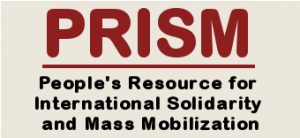
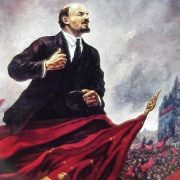
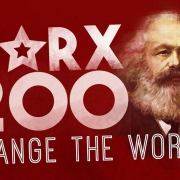
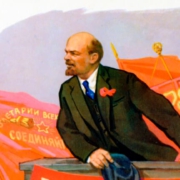
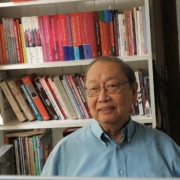


Leave a Reply
Want to join the discussion?Feel free to contribute!